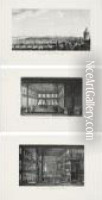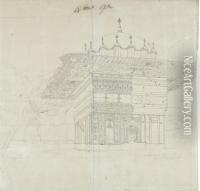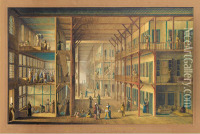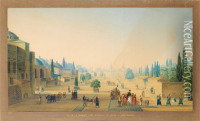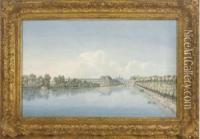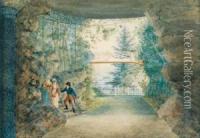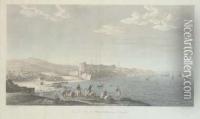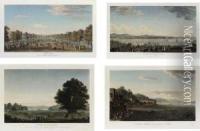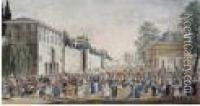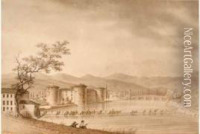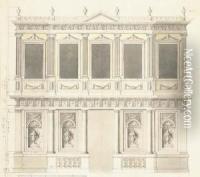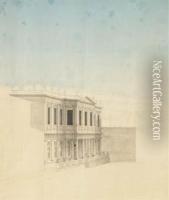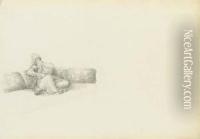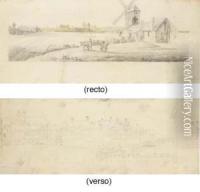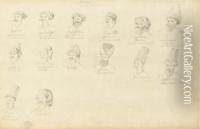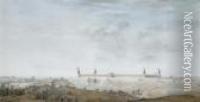Antoine-Ignace Melling Paintings
Antoine-Ignace Melling was a painter, architect, and engraver of French-German origin, born in Karlsruhe, Germany in 1763. He is best known for his detailed views of the Ottoman Empire, particularly during the reign of Sultan Selim III. Melling's family moved to France when he was young, and he initially studied under his brother, who was an architect. His journey to the Ottoman Empire in 1784 marked the beginning of a significant phase in his career.
Melling arrived in Constantinople, now known as Istanbul, and gained access to the Ottoman court. His skill as an artist and architect quickly caught the attention of Sultan Selim III, who commissioned him to design gardens and buildings, as well as to illustrate the landscapes and daily life of the empire. Melling's ability to capture the architectural and cultural essence of the Ottoman world was unmatched in his time. He spent 18 years in Constantinople, during which he meticulously documented the city and its surroundings.
In 1803, Melling returned to Paris and began working on a monumental work, 'Voyage pittoresque de Constantinople et des rives du Bosphore.' It took him nearly twenty years to complete this series of engravings, which were published in installments starting in 1809 and concluding in 1826. The work is notable for its precision and beauty, combining architectural detail with vibrant scenes of everyday life, thus offering a unique glimpse into the Ottoman Empire at the turn of the 19th century.
Melling's art played a significant role in shaping Western perceptions of the East, influencing the Orientalist movement in European art and architecture. His engravings and paintings were not just artistic expressions but also valuable ethnographic records that captured the intersection of various cultures.
Antoine-Ignace Melling died in Paris in 1831. His legacy lives on through his detailed and exquisite representations of the Ottoman Empire. His work is a testament to his unique position as both an insider and outsider in the Ottoman world, and it continues to be a source of inspiration and historical information about a period of great cultural exchange and transformation.
